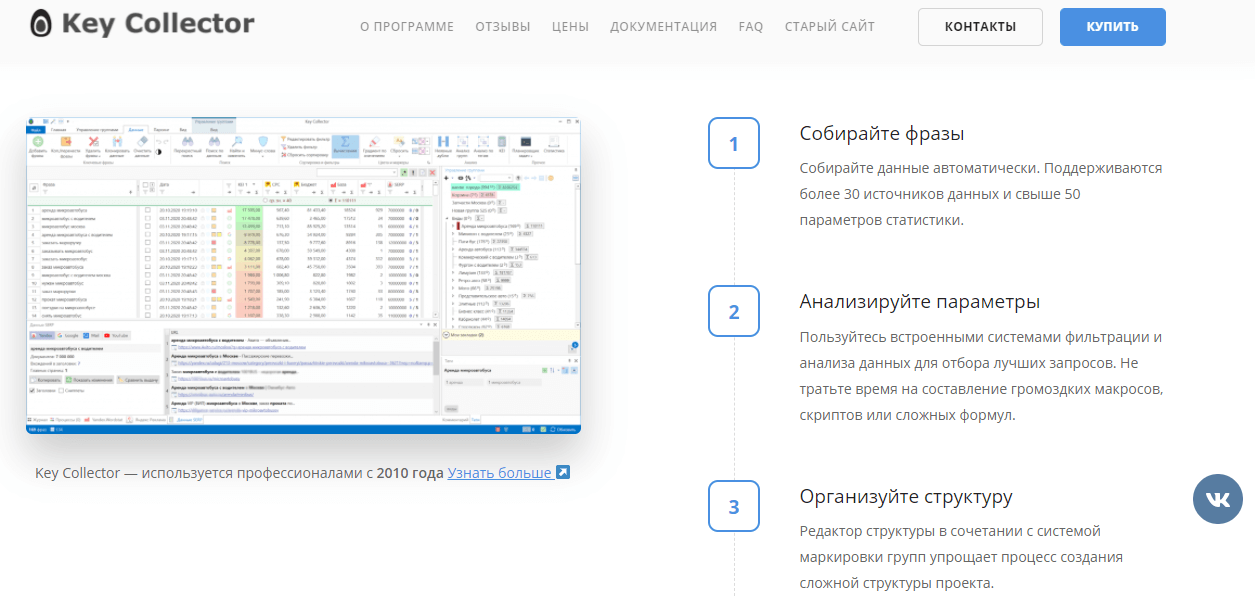Content of the article
- /01 What is SEO friendly content?
- /02 8 Steps to Create SEO Friendly Content
- 1. Estimating the degree of usefulness of content
- 2. Keyword Analysis
- 3. Structuring and working out the readability of content
- 4. Creating catchy headlines
- 5. Content update
- 6. Optimization of URL, metadata, images
- 7. Adding relevant links, microdata, and social media buttons
- 8. Mobile Content Optimization
- /03 Let's summarize

What is SEO friendly content?
The main component for any site is its content, the purpose of which is to attract the attention of visitors. The content should be friendly, because if it is difficult for a visitor to navigate or the content on your site is not clear at all, then most likely he will not stay on it, and you will lose a potential client, buyer, subscriber, customer, etc.
Quality content, when combined with technical SEO strategies, is able to satisfy the search intent and query of the visitor, as well as assist search engines in delivering the most relevant results.
In other words, SEO friendly content is unique content that is carefully crafted and optimized using various SEO techniques to grab and hold the attention of readers and search engines. Content should provide value both to site visitors by answering their questions, and to search engines by helping them understand the content and give it a high ranking.
8 Steps to Create SEO Friendly Content
In order to outperform your competitors in the world of digital marketing and rank high in the search engine results, you need to create SEO-friendly content that is optimized for user queries and search engine requirements. You can check the friendliness of content using Google Analytics or Microsoft Clarity tools.
The process of creation and optimization involves taking into account several important aspects. Next, we will consider each of them in more detail.
1. Estimating the degree of usefulness of content
First, you need to analyze the quality, usefulness, and variety of your content types by looking at it through the eyes of the user. At the present time, for the optimization and ranking of sites, it is definitely important to take into account behavioral factors and user opinions. For this you need:
- determine the target audience, what they are looking for on the web and what kind of content is most useful for this;
- to understand how your target audience forms and formulates their requests and what solutions or answers they expect to receive using your content;
- determine how much the article is filled with links, if there is a glut;
- analyze whether your content is understandable and convenient for the perception of visitors.
In this way, you can find a balance between the interest of people and the requirements for SEO promotion.
2. Keyword Analysis
Properly selected keywords are an extremely important part of modern SEO, which will help to satisfy the search queries of the target audience and rank high in the search. When choosing target keywords, you need to determine:
- what exactly people are looking for, namely the exact phrases that are used when searching the Internet, as well as the number of requests for the keyword;
- purpose and scope of the search;
- resources, which is how you will compete with content that is already being used in search results. You may need to work on the words and phrases a bit and choose the most relevant keywords.
Here are some trusted sources for keyword research for SEO friendly content:
Key Collector

Google ADS Keyword Planner

Serpstat

3. Structuring and working out the readability of content
To create high-quality content that will answer the questions of the target audience, structure it. By systematizing information, you ensure ease of reading, because it is important that the content is presented in an understandable and convenient form.
When developing content, it is important to pay attention to:
- clear structure, consistency and coherence of the text;
- smaller paragraphs for easier reading and subheadings;
- keyword density level;
- using numbered and bulleted lists;
- length of words and sentences, writing style.
Ahrefs, Istio, Miratext and TextAnalyzer services will facilitate the work with content.
4. Creating catchy headlines
An important point is to create eye-catching headlines, as they increase readability and have a big impact on SEO. A properly optimized SEO title should contain the target keyword at the beginning, an accurate description of the article, and be no longer than 60 characters.
5. Content update
If your site already contains attractive and in-demand content, then you need to keep it relevant for search engines. For example, if you change the publication date and edit the text a little, this will help search engines index your site again.
It is important to create new content regularly, because search engines are tuned to return the best and most recent results.
6. Optimization of URL, metadata, images
For better rankings, it is important to create SEO optimized URLs:
- Compose a CNC URL (human readable URL) with a keyword on each page. This will help search engines better identify the page and improve your site’s visibility;
- Create relevant and simple URLs by shortening or removing unnecessary words;
- You need to use a hyphen to separate words. For example, https://domain/knizhnye-polki
- Use only lowercase letters because uppercase letters can result in a 404 error on some servers;
- avoid using stop words such as a, an, but and or.
Visual content is the best way to grab the reader’s attention. Since Google cannot read the text in images, but only interprets and adapts its content, it is necessary to optimize images. To do this, you need to register the alt and title attributes, captions for pictures and file names.
To attract more traffic, you need to correctly configure meta tags – this is a brief summary of the content that is used for ranking by search engines and affects the issue. Snippen should look attractive and informative, because this is the first thing the user sees on the search engine results page. The best solution is to include keywords in the description and avoid using stop words. Correct if it does not match the title.
7. Adding relevant links, microdata, and social media buttons
Linking within the site helps to organically fill the content with internal and external links. This is an added value, as internal links are an effective way to reduce bounce rates, increase the time a reader spends on a site, and help search engines understand the relevancy of content. An important condition is a moderate number of external links from domains with a good reputation.

It is necessary to add micro-markup to the pages of the site, as it allows you to create rich snippets that increase click-through rate and the amount of traffic.

The best way to check validation is to use Google’s Structured Data Markup Wizard.
Adding social media buttons to your site helps keep the reader interested in the content and gives them the opportunity to share it.

8. Mobile Content Optimization
Responsive website design and content optimization for mobile devices is a must for search engines, which helps to rank sites well. Content must be provided in a readable and easy-to-navigate format. It is necessary to analyze and take care of your website loading speed and content display. You can see how the user sees the pages from a phone or tablet and check the site for its “mobility” using Google Mobile Friendly.

Correct display of the material makes it SEO friendly.
Let’s summarize
Creating SEO friendly content is a very time consuming process, but the end result is definitely worth it. By following the above tips and tricks for optimizing and creating SEO friendly content, you will be able to get the most out of your website content. Quality and compelling content paired with SEO strategies will lead to more customers, through website rankings and high positions in the SERPs, will also make visitors stay longer and come back to your site and share your content.






 17/09/2021
17/09/2021  2220
2220


